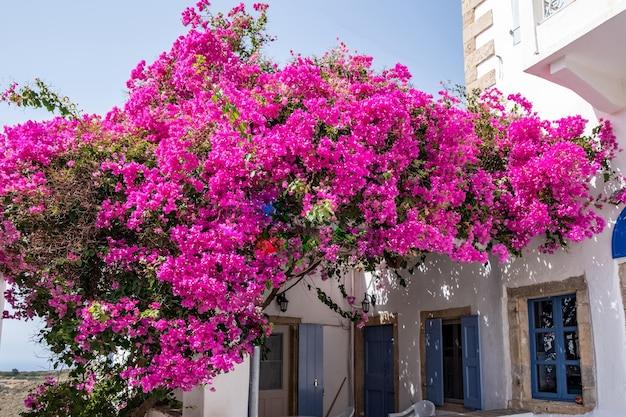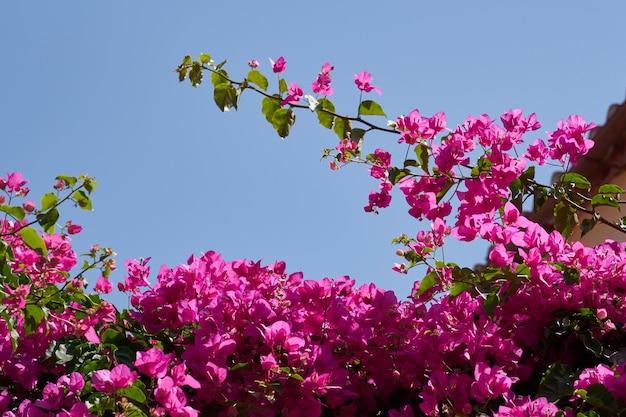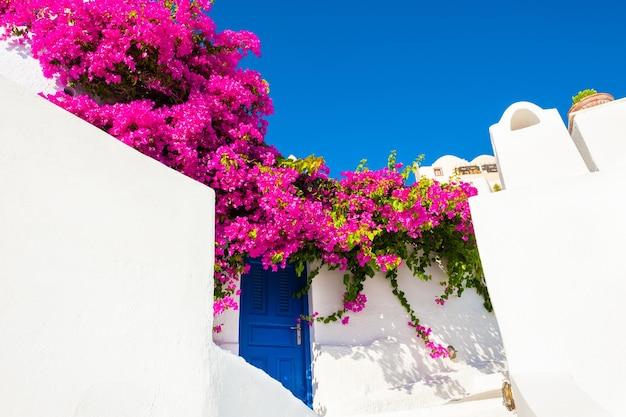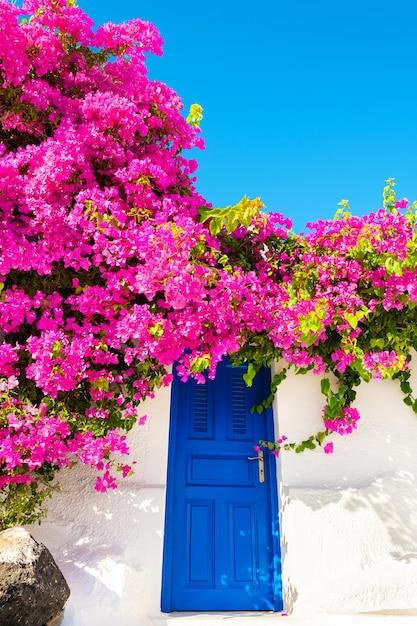Ah, Greece! The scenic coastal landscapes, ancient ruins, and mouthwatering delicacies – it’s a country that never fails to captivate. But have you ever wondered about the enchanting flowers that grace this Mediterranean paradise? In Greek mythology, flowers hold a significant role, symbolizing gods, goddesses, and various emotions. Join us as we delve into the world of ancient Greek plants and flowers, uncovering the intriguing tales behind them. From the mythical significance to the traditional flower of Greece, this blog post is your guide to the blossoms that add color and charm to Greece’s rich cultural heritage.
Greek Flowers: A Bouquet of Myth and Beauty
Greek flowers, much like the gods and goddesses of ancient Greece, are steeped in mythology, romance, and breathtaking beauty. From delicate blossoms adorning lush landscapes to vibrant blooms woven into tales of love and passion, the flora of Greece offers an enchanting tale waiting to be explored. So, grab your laurel wreath and let’s embark on a floral journey through the hills and valleys of ancient Greece.
The Mythical Connection: Flowers and the Gods
In Greek mythology, flowers were more than just pretty petals; they were imbued with divine symbolism. Each flower had a story to tell, often intertwined with the gods and goddesses themselves. For instance, the Hyacinth, with its fragrant pink and purple blossoms, was said to have sprung from the blood of the mortal Hyacinthus, accidentally slain by Apollo. Since then, the flower has become a symbol of grief and mourning.
Other flowers, like the Narcissus, hark back to the tale of a hunter so enamored with his own reflection that he wasted away and transformed into this delicate flower. Its white petals, with a golden corona at the center, serve as a reminder of vanity and self-obsession.
Blooming Festivals: Celebrating Floral Beauty
To celebrate the beauty of Greek flowers, the ancient Greeks held festivals dedicated to the floral wonders of nature. One such festival was the Anthesteria, a three-day celebration held in February to welcome the arrival of spring. During this festival, the Greeks adorned their homes with flowers and crowned themselves with flower wreaths, symbolizing the renewal and fertility that spring brings.
Another notable celebration was the Floralia, a Roman festival inspired by Greek traditions. It was a time of merriment, with parades, theatrical performances, and cheerful gatherings held in honor of the goddess Flora, the deity of flowers and spring. It was an occasion to revel in the blooming blossoms and rejoice in the vibrant colors of nature.
Sacred Offerings: Flower Power in Ancient Greece
Flowers held great significance in ancient Greece, not only in myth and festivals but also in religious ceremonies and rituals. The Greeks believed that flowers had the power to connect mortals with the divine. Temples and altars were adorned with garlands and wreaths made from fragrant flowers as offerings to the gods and goddesses.
An example of this is the lotus flower, which held a special place in the worship of the goddess Demeter. The lotus was considered a sacred flower and was often depicted in ancient Greek art. Its delicate, symmetrical petals symbolized purity and fertility, making it a fitting tribute to the goddess of agriculture and the harvest.
Beauty in Bloom: Greek Flowers Today
The legacy of Greek flowers lives on in modern day Greece, where these enchanting blooms continue to captivate locals and visitors alike. From the vibrant red poppies that blanket the hillsides to the delicate anemones that sway in the coastal breeze, Greece is a floral paradise.
Whether strolling through the olive groves of Crete or exploring the ancient ruins of Athens, you’ll be greeted by an array of colorful blooms. The country’s diverse climate and landscapes allow for a wide variety of flowers to thrive, ensuring that Greece remains a kaleidoscope of floral beauty.
As you immerse yourself in the myth and magic of Greek flowers, take a moment to appreciate the rich tapestry they weave in the cultural and natural heritage of Greece. From mythological tales to vibrant festivals, these blooms are a testament to the enduring power of nature’s artistry. So, next time you encounter a Greek flower, remember the stories it carries and let its enchanting beauty transport you to the ancient hills of Greece.
Flowers in Mythology
Flowers have been an integral part of mythology across various cultures, and Greek mythology is no exception. The ancient Greeks attributed deep meanings and symbolism to different flowers, weaving them into their mythology and legends. Let’s take a lighthearted and mythological journey through some of the fascinating flowers in Greek mythology.
The Narcissus – Ego Blooms
One of the most famous flowers in Greek mythology is the narcissus. As the story goes, there was a handsome young man named Narcissus, who was in a ceaseless pursuit of his own reflection. So obsessed was he with his good looks that he languished beside a pool, only to be transformed into a beautiful flower called the narcissus. Talk about self-love in full bloom!
The Hyacinth – A Blooming Tragedy
Another flower with a tragic origin is the hyacinth. According to Greek mythology, the young prince Hyacinth was accidentally killed by the discus thrown by the god Apollo. From the blood of the fallen prince, a vibrant flower sprouted, which the god Apollo named after him. The hyacinth became a symbol of grief and everlasting sorrow, reminding us that even in tragedy, beauty can blossom.
The Lily – Divine Purity
In Greek mythology, the lily is believed to have originated from the milk of the goddess Hera, the queen of the gods. Legend has it that when baby Hercules was brought to Hera and she nursed him, a few drops of her divine milk fell to the ground and bloomed into lilies. These flowers came to symbolize purity and innocence, reminding us that beauty can arise from the most unexpected of sources.
The Iris – Heavenly Messenger
The stunning and vibrant iris flower is associated with the goddess Iris, who served as the messenger of the gods in Greek mythology. With her rainbow-colored wings, Iris traveled between the heavens and Earth, delivering important messages from the gods to mortals. It is said that the rainbow-hued petals of the iris represent the connection between heaven and Earth, making it a truly heavenly flower.
The Poppy – Dream Weaver
In Greek mythology, the bright red poppy flower was believed to have originated from the tears of the goddess Demeter. Demeter wept when her daughter, Persephone, was taken to the Underworld by Hades. It is said that the poppies bloomed wherever her tears fell, offering a reminder of the sorrow and loss endured by the goddess. These vibrant flowers have come to symbolize sleep, dreams, and the fleeting nature of life.
The Violet – Love’s Blossom
According to Greek mythology, the violet flower was created by the god Zeus as a symbol of his love for the mortal woman, Io. Zeus transformed his lover into a cow to protect her from his jealous wife, Hera. While Io was in this form, Zeus adorned her with violets to show his affection. These delicate violet flowers have since become associated with love and everlasting devotion.
So, the next time you come across flowers blooming in the Greek landscape, remember the mythological stories they carry. From self-love to tragic beauty, heavenly messengers to blossoms of love, these flowers continue to captivate our imagination and remind us of the enduring power of myth and nature’s colorful tapestry. Keep an eye out for the hidden tales woven into the petals of these enchanting Greek flowers.
Greek Plants and Flowers: A Vibrant Landscape
Greece, known for its ancient history and stunning landscapes, is also home to a diverse array of beautiful plants and flowers. From the vibrant red poppies to the delicate blue forget-me-nots, there is no shortage of eye-catching botanical wonders to explore. In this section, we will dive into the captivating world of Greek plants and flowers, discovering their unique characteristics and cultural significance.
Olive Trees: The Mighty Symbol of Greece
Olea europaea, or the olive tree, is an iconic symbol of Greece. These hearty trees, with their twisted trunks and shimmering silver leaves, have thrived in the Mediterranean region for thousands of years. Olive trees not only provide us with the beloved olive fruit and oil, but they also hold a significant place in Greek mythology and culture.
According to ancient Greek mythology, the city of Athens was named after the goddess Athena, who gifted the olive tree to humanity. It symbolized peace, wisdom, and prosperity, and its oil was used for cooking, cosmetics, and religious ceremonies. To this day, olive trees continue to play a vital role in Greek cuisine and culture, reminding us of the enduring legacy of the ancient world.
The Enchanting Almond Blossoms
Imagine strolling through a Greek countryside in early spring, surrounded by the enchanting beauty of almond blossoms. These delicate pink and white flowers, nestled on the branches of almond trees, herald the arrival of the new season. Their sweet fragrance fills the air, inviting bees and other pollinators to join in the celebration of life.
In addition to their aesthetic appeal, almond trees hold special significance in Greek mythology, representing fertility and eternal love. Legend has it that when Phyllis, the daughter of a Thracian king, was abandoned by her lover, Demophon, she sought solace in the arms of a fig tree. The gods, moved by her despair, transformed her into an almond tree, forever blooming as a symbol of enduring love.
Bougainvillea: A Riot of Color
If you’re searching for a vibrant burst of color amidst the Greek landscape, look no further than the bougainvillea. These showy and vivacious flowers, often found cascading down whitewashed walls, bring a touch of tropical paradise to Greece. With their brilliant hues of red, pink, purple, and orange, bougainvillea can instantly transform any corner into a visual spectacle.
Despite their stunning appearance, bougainvillea flowers are technically not flowers at all but rather specialized leaves called bracts. Nevertheless, their beauty knows no bounds, enchanting visitors and locals alike. So, whether you’re sipping on a refreshing Greek frappé or exploring the ancient ruins, don’t forget to take a moment and indulge in the captivating beauty of bougainvillea.
Lavender: The Scent of Serenity
If you close your eyes and breathe in deeply, you might catch the fragrant scent of lavender wafting through the Greek countryside. This aromatic herb, with its slender purple flowers and soothing fragrance, has been used for centuries to promote relaxation and tranquility. In Greece, lavender is not only prized for its calming properties but is also admired for its versatility.
From essential oils and perfumes to skincare products and traditional remedies, lavender finds its way into various aspects of Greek culture. The ancient Greeks believed that lavender possessed healing powers and used it to treat insomnia, anxiety, and even headaches. So, the next time you’re seeking a moment of serenity, close your eyes, inhale the calming aroma of lavender, and let your worries melt away.
In the Vibrant Garden of Greece
As we wander through the vibrant garden of Greek plants and flowers, we are reminded of the rich tapestry of culture, mythology, and history that has shaped this breathtaking landscape. From the olive trees symbolizing peace and prosperity to the delicate almond blossoms representing everlasting love, each plant and flower carries a unique story waiting to be discovered. So, the next time you find yourself in Greece, take a moment to embrace the beauty that surrounds you, and let nature weave its magic in your heart.
What Flowers Did the Greeks Use
The Greeks were known for their deep appreciation and admiration of nature, and their use of flowers was no exception. From ancient times, flowers held cultural significance and were an integral part of Greek society. Let’s take a closer look at some of the flowers that Greeks commonly used in their art, religious ceremonies, and everyday life.
The Power of The Olive Tree
While not technically a flower, the olive tree (Olea europaea) deserves a mention due to its significance in Greek culture. The olive tree symbolized peace, unity, and victory, and its branches were often used to crown winning athletes during the Olympic Games. Olive wreaths were also given as a mark of honor to playwrights and poets, making this tree an essential part of Greek celebrations and traditions.
The Sweet Fragrance of Hyacinths
Hyacinths (Hyacinthus orientalis) were highly cherished by the Greeks. According to mythology, the flower originated from the blood of the handsome young Hyacinthus, who was accidentally struck and killed by Apollo’s discus. In his honor, the god Apollo created the hyacinth flower. The Greeks associated hyacinths with sport and athleticism, and they were frequently used in wreaths and adornments. With their vibrant colors and sweet fragrance, hyacinths brought joy and beauty to the ancient Greeks.
The Majestic and Enduring Lotus
The lotus flower (Nymphaea) holds immense symbolism in Greek mythology. It is said that the lotus emerged from the breasts of the Earth goddess, Gaia, and represented purity and rebirth. The Greeks used lotuses in ceremonies dedicated to deities such as Aphrodite and Apollo. Furthermore, the lotus adorned many architectural structures, pottery, and frescoes, showcasing the flower’s enduring presence in Greek culture.
The Fantastic Floral Palette of Greek Mythology
Greek mythology is filled with tales of gods, goddesses, and mortals intertwined with the beauty of flowers. The myth of Narcissus tells the story of a handsome man who fell in love with his own reflection and turned into the delicate Narcissus flower. The story of Adonis and Aphrodite features the anemone, believed to have grown from his blood. These myths demonstrate how deeply flowers were woven into the fabric of Greek narratives and beliefs.
Medicinal Herbs for Healing
Beyond their cultural and mythological significance, the ancient Greeks recognized the healing properties of flowers and herbs. The use of plants for medicinal purposes, known as herbalism, was well-established in ancient Greece. The Greeks used flowers and herbs such as chamomile, lavender, and thyme for their therapeutic benefits, treating various ailments and enhancing overall well-being.
A Floral Legacy That Lives on
The appreciation and usage of flowers in Greek culture have left a lasting impact on the world. The beautiful blooms that were cherished by the Greeks continue to inspire artists, poets, and gardeners alike. Today, we can still see the influence of these flowers in art, literature, and gardening, reminding us of the rich and vibrant history of Greek floral traditions.
So there you have it – a glimpse into the fascinating world of Greek flowers. From the traditional olive branches to the enchanting hyacinths and the enduring lotus, each flower played a unique role in Greek mythology, art, and daily life. The Greeks understood the power and beauty that flowers possess, and their legacy continues to captivate and inspire us today.
What is the Traditional Flower of Greece
Greece, famous for its rich history, stunning landscapes, and mouth-watering cuisine, is also known for its beautiful flowers. Among the many floral wonders that adorn this Mediterranean country, the traditional flower of Greece holds a special place in the hearts of locals and tourists alike. So, without further ado, let’s dive into the mesmerizing world of Greek flowers and discover the enchanting bloom that represents the spirit of this ancient land.
The Majestic Laurel Wreath: A Symbol of Triumph and Glory
Intriguingly, Greece has a long-standing tradition of associating its national symbol with an enchanting flower – the laurel wreath. Historically, the laurel wreath was a garland made from the leaves and branches of the bay laurel tree, scientifically known as Laurus nobilis. This magnificent flowerless crown, woven into a circular shape, was worn by Ancient Greek athletes, scholars, and military commanders to signify victory and honor.
A Mythological Connection: Daphne and Apollo
To fully grasp the significance of the laurel wreath, we must unravel the tale of Daphne and the god Apollo. According to Greek mythology, Daphne, a nymph, captivated the attention of Apollo, the god of music, poetry, and truth. However, Daphne, uninterested in Apollo’s affections, pleaded with her father, the river god Peneus, to rescue her from Apollo’s pursuit. In response, Peneus transformed Daphne into a laurel tree, forever preserving her chastity.
Eternal Symbolism: Victory, Knowledge, and Immortality
The laurel wreath became an enduring symbol in Greek culture, representing triumph, wisdom, and immortality. Whether adorning the heads of victorious athletes in the Olympic Games or crowning the brows of revered scholars, this exquisite floral emblem embodied the core values of Greek civilization.
A Flowerless Wonder: The Evergreen Bay Laurel
While the laurel wreath holds immense significance in Greek culture, it is important to note that the laurel wreath itself is not comprised of flowers but rather the verdant foliage of the bay laurel tree. Symbolic of eternal life, the evergreen leaves of the bay laurel tree endure through every season, mirroring the timeless spirit of Greece and its people.
Wrap-Up: Embrace the Timeless Charm of Greek Flowers
While Greece boasts a myriad of breathtaking flowers that flourish in its Mediterranean climate, the laurel wreath, woven from the evergreen bay laurel leaves, stands proudly as the traditional flower of this ancient land. Symbolic of victory, knowledge, and immortality, it continues to captivate the imagination and evoke a sense of reverence and awe, resonating with the rich history and culture that continues to enchant visitors to this day.
So, when you next find yourself in Greece, take a moment to appreciate the beauty and symbolism of the laurel wreath, a floral testament to the triumphs and enduring spirit of this extraordinary country.



